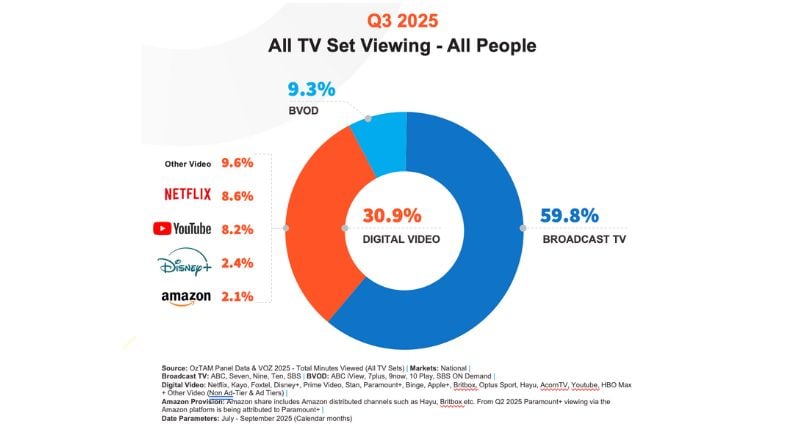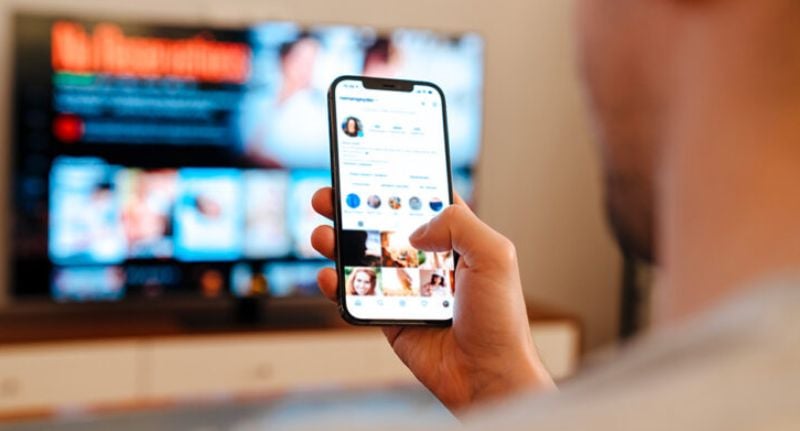OzTAM’s latest quarterly viewing data shows broadcast television remains the backbone of Australian video consumption – but younger audiences are increasingly favouring digital platforms, reinforcing agency calls for cross-platform currency and deeper verification.
Across July to September, broadcast TV accounted for 59.8% of viewing among total people. Total BVOD sat at 9.3%, while digital video – including Netflix, YouTube, Disney+, and Prime Video – held steady at 30.9%.
In the commercial heartland, the balance has shifted.
Streaming (digital video + BVOD) now commands 53.9% among 25–54s, compared to broadcast at 46.1%.
Men 18–39 spend more than half their time with digital video, while women 18–39 recorded the highest BVOD share across all demos at 17.7%.
It’s the generational carve-out agencies have anticipated: older audiences hold firm in traditional habits; younger cohorts jump across platforms – and buyers need flexible, unified proof to follow them.

Netflix leads, YouTube gains ground
Netflix remained the top streaming platform at 21.3% share of minutes viewed, while YouTube rose to 20.5%, driven by men 18–39, who lifted to 24.1%.
The dynamic underscores a market balancing premium long-form environments and algorithm-driven scale – a tension shaping media mix conversations across holding groups.
More demos, sharper decisions
Now in its third iteration, the quarterly release has expanded from five core demos at launch to 21 demographic segments, giving subscribers more precise audience slicing.
“As Australians continue to explore more ways to watch, Streamscape provides a unified view of where attention goes and how that changes over time,” OzTAM CEO Karen Halligan said.
“The growing depth of demographic detail allows advertisers and media partners to plan and measure with far greater insight and we look forward to this continuing as this evolving product continues to mature.”
Streamscape is provided quarterly to subscribers, with monthly and quarterly snapshots across TV sets.
Reporting will expand in 2026 to include smartphones, tablets, and computers, and shift to a digital interactive dashboard in the first half, a move aimed at deepening planning tools as scrutiny around CTV measurement intensifies.
